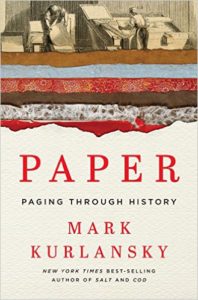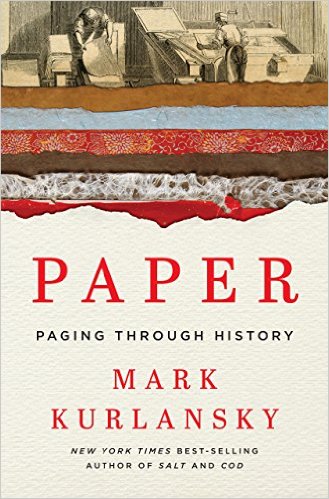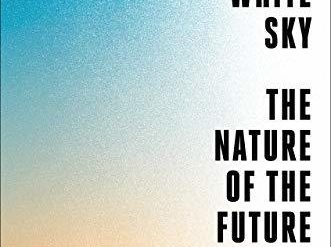
Often history can be usefully viewed through the lens of a single product. For example, Harvard professor Sven Beckert’s powerful book, Empire of Cotton: A Global History, illuminates the early centuries in the history of capitalism by tracing the growth of the textile industry from its origins in Europe’s mercantile revolution to the present day. Mark Kurlansky’s story of Paper: Paging Through History, is less successful. Beckert views the history of cotton as a key to understanding the emergence of capitalism and imperialism, and his argument is compelling. Kurlansky drills down into the endless details of how paper is produced. In the end, he relates more than you ever wanted to know about paper.
Estimated reading time: 3 minutes
Paper is only the half of it
Kurlansky opens his story by relating the development of imagery and language tens of thousands of years in the past, which only manifested as writing some five or six thousand years ago in the Middle East. Paper came much later, first in China, where it was normally used to wrap packages, then in the Muslim world and, finally, in Europe. Until the 13th century, when paper mills first appeared outside Muslim Spain (in Italy), books and other written documents in Europe were written on parchment (scraped and treated animal skin) or vellum (specially prepared calfskin).
Paper: Paging Through History by Mark Kurlansky (2017) 416 pages ★★★☆☆
In fact, both were still in wide use in the Western world in the eighteenth century: the official version of the Declaration of Independence was inscribed on parchment. Paper came to be produced in enormous quantities only with the emergence of publishing in the 15th century following Johannes Gutenberg’s introduction of movable type, which vastly sped up the printing presses then in limited use. As Wikipedia notes, “by 1500, 1000 printing presses were in operation throughout Western Europe and had produced 8 million books.”
Kurlansky devotes considerable space to the artistic uses of paper — for calligraphy in China and Japan, for such arts as origami, and in its many custom-made versions for use by graphic artists. The names of many famous artists crop up in the story.
About the author
Mark Kurlansky has written sixteen books of nonfiction, of which Paper is the most recent. The most notable of his previous efforts are Cod: A Biography of the Fish That Changed the World and Salt: A World History. He has also written nine other books.
For related reading
You may enjoy browsing through 20 top nonfiction books about history.
If you enjoy reading history in fictional form, check out 20 most enlightening historical novels.
And if you’re looking for a broader view of human history, check out New perspectives on world history.
And you can always find my most popular reviews, and the most recent ones, on the Home Page.



























